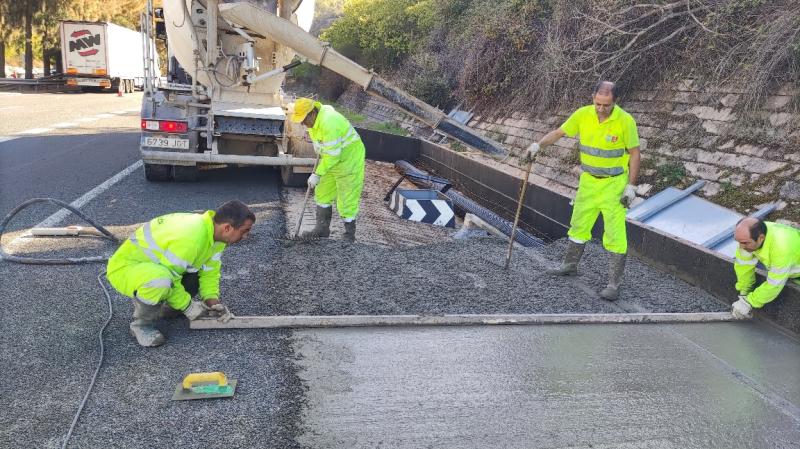Transportes awards a contract for the conservation of 183.3 km of roads in Cáceres for 15.75 million euros

Transportes awards a contract for the conservation of 183.3 km of roads in Cáceres for 15.75 million euros
The Ministry of Transport and Sustainable Mobility has awarded a contract for the conservation and exploitation of state roads in the province of Cáceres for 15,748 million euros (VAT included). The duration of the contract is 3 years, with the possibility of extension of 2 years and an additional one of a maximum of 9 months.
It includes requirements to promote energy efficiency and emission reduction and is part of the program of this Ministry to maintain traffic, road and safety conditions in the State Road Network (RCE), ensuring that it is accessible in the appropriate conditions to all citizens. It includes actions such as the surveillance and attention of accidents, the winter road, the control service of tunnels and communications or the maintenance of facilities.
This contract is intended for the maintenance and maintenance of 183,373 km of roads in Sector No. 01, including 133,710 km of motorway. In particular:
- Motorway A-5 throughout its route through the province of Cáceres, from km 168, on the provincial border with Toledo, to km 301, on the border with Badajoz. Along these 134 kilometers, the motorway passes through Peraleda de la Mata, Navalmoral de la Mata, Almaraz, Jaraicejo and Trujillo
- N-5 in four sections: from km 184 (Millanes) to 186 (Saucedilla), from km 193 (Almaraz) to 232 (Torrecillas de la Tiesa); from 254 to 259 (all in Trujillo) and from 287 (Escurial) to 289 (Miajadas).
- N-5A from km 259,334 to 260,95, at the height of Trujillo.
The contract also includes the execution of the superficial rehabilitation of the firm on several sections of the A-5 Motorway, between the kilometers 272,400 and 280,500, corresponding to the section between Puerto de Santa Cruz and Villamesías.
Reduce emissions
Within the strategy of reducing emissions and improving energy efficiency, the tender documents of the conservation and exploitation contracts (COEX) of the State Road Network include objectives of mitigation and compensation of the carbon footprint, which means that companies must include in their offers the calculation of the carbon footprint that they will generate during the execution of the contract in each stretch of the road.
In 2022, energy efficiency measures were incorporated into service facilities such as self-consumption, renewable heating systems, energy saving measures in lighting or the implementation of electric vehicles.
In addition, since 2023, its commitment to submit, during the first six months of the contract, a decarbonization plan with the purpose of reaching the carbon neutral balance at 5 years from the beginning of the contract is included as an assessment criterion.
In this way, the awarding company has undertaken to submit such a plan, in which the compensation can be done through the absorption projects registered in the carbon footprint register, compensation and carbon dioxide absorption projects under the Ministry for Ecological Transition and Demographic Challenge or through other options.
The aim is to reduce CO2 by 71,640 tons per year, which, according to calculations made by the General Directorate of Roads, generates the regular operation and maintenance and operation of the State Road Network and reinforces the orientation towards the Sustainable Development Goals (SDGs) to which this Ministry is committed: 9 (promotion of reliable, sustainable and quality infrastructure); 11 (access to safe, accessible and sustainable transport systems); 8 (contribution to economic growth and employment); and 7 (energy efficiency).
Conservation model characteristics
The model of mixed contracts (services and works) for the execution of conservation and exploitation operations aims to offer a comprehensive service of mobility to the user, improve the state of the road and network, and optimize public resources.
Through them, works are carried out to help the roads and ordinary conservation of the roads, to allow the infrastructure and its functional elements to have the best possible conditions of circulation and safety. It includes actions such as: status information and programming agenda, operating aid and road safety studies, and maintenance of road elements with adequate levels of quality.